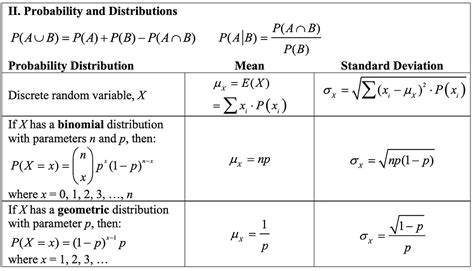Probability is the branch of mathematics that deals with the likelihood of events occurring. It is used in a wide variety of fields, including statistics, finance, and engineering. In AP Statistics Unit 4, students will learn the basics of probability, including:

- The concept of probability
- Different types of probability distributions
- How to calculate probabilities using the rules of probability
Probability is a fundamental concept in statistics, and it is essential for understanding how to analyze data. By the end of this unit, students will be able to use probability to solve a variety of problems, including:
- Predicting the likelihood of future events
- Making decisions based on data
- Evaluating the reliability of statistical studies
Key Concepts in AP Statistics Unit 4
Some of the key concepts that students will learn in AP Statistics Unit 4 include:
- **Probability:** The likelihood of an event occurring. Probability is expressed as a number between 0 and 1, where 0 indicates that the event is impossible and 1 indicates that the event is certain.
Applications of Probability in Statistics
Probability is a powerful tool that can be used to solve a wide variety of problems in statistics. Some of the most common applications of probability in statistics include:
- Predicting the likelihood of future events: Probability can be used to predict the likelihood of future events based on past data. For example, a statistician might use probability to predict the likelihood of a team winning a sporting event or the likelihood of a stock price increasing.
- Making decisions based on data: Probability can be used to make decisions based on data. For example, a business might use probability to decide whether to launch a new product or a non-profit organization might use probability to decide which programs to fund.
- Evaluating the reliability of statistical studies: Probability can be used to evaluate the reliability of statistical studies. For example, a scientist might use probability to evaluate the validity of a medical study.
Probability is a fundamental concept in statistics, and it is essential for understanding how to analyze data. By the end of this unit, students will be able to use probability to solve a variety of problems and make informed decisions.
Tips and Tricks for Success in AP Statistics Unit 4
Here are some tips and tricks for success in AP Statistics Unit 4:
- **Start by understanding the basics.** Before you can start applying probability to solve problems, you need to understand the basic concepts. Make sure you have a solid understanding of the concept of probability, different types of probability distributions, and the rules of probability.
Frequently Asked Questions (FAQs) About AP Statistics Unit 4
Q: What are the most important topics covered in AP Statistics Unit 4?
A: The most important topics covered in AP Statistics Unit 4 include the concept of probability, different types of probability distributions, the rules of probability, conditional probability, and Bayes’ theorem.
Q: What are some good resources for learning about probability?
A: There are many different resources available for learning about probability. Some good resources include textbooks, online courses, and practice problems.
Q: How can I prepare for the AP Statistics exam?
A: The best way to prepare for the AP Statistics exam is to study the material thoroughly and practice solving problems. You can also take practice exams to get a better sense of what the exam will be like.
Q: What are some tips for success on the AP Statistics exam?
A: Some tips for success on the AP Statistics exam include studying the material thoroughly, practicing solving problems, and taking practice exams. It is also important to understand the concepts that are tested on the exam and to be able to apply them to different types of problems.
